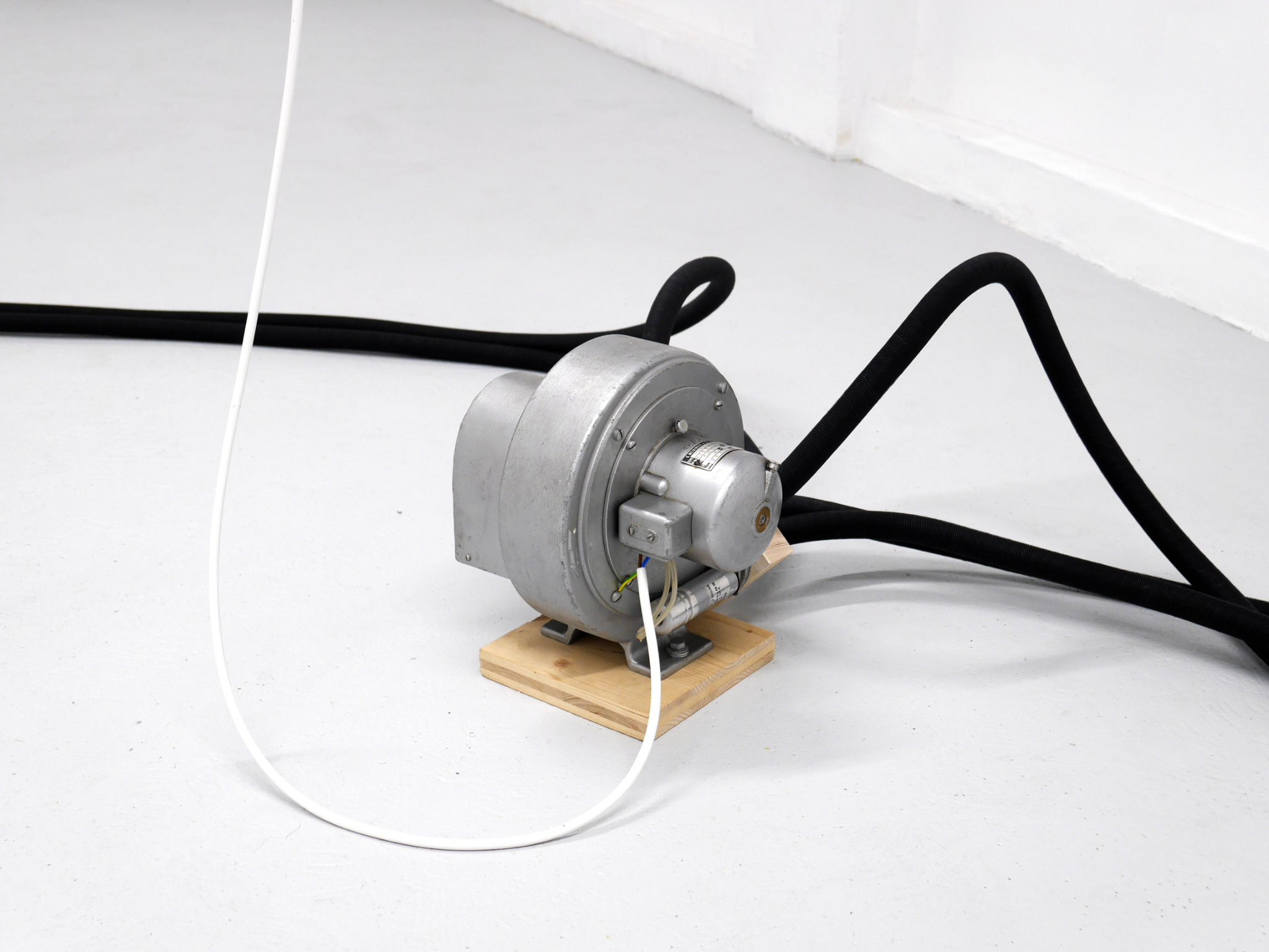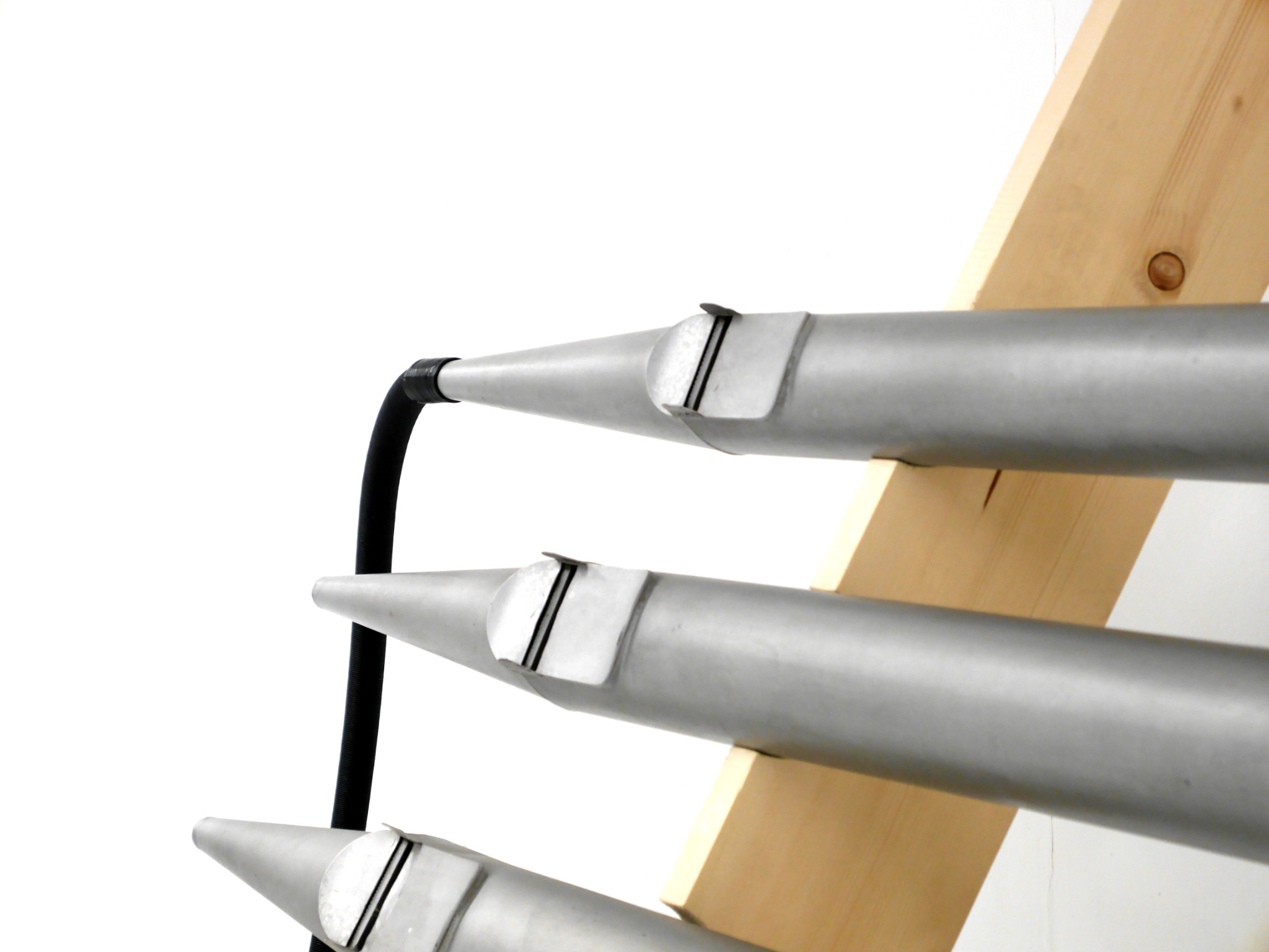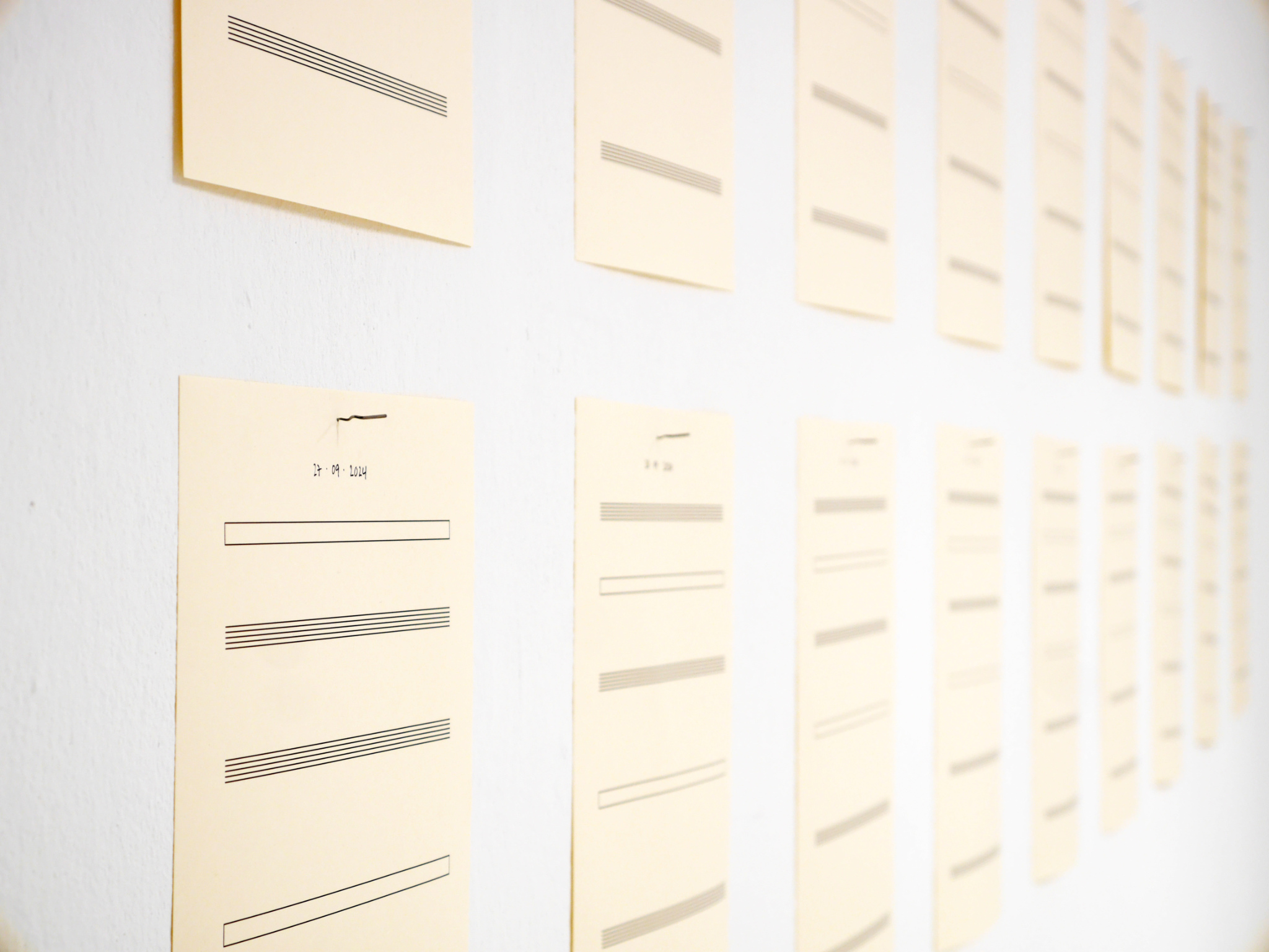Principal
Principal ist eine Installation aus mehreren Orgelpfeifen und deren Windversorgung.
Die hellgrau lackierten Labialpfeifen aus Zink mussten im Zuge einer
Restaurierung Zinnpfeifen weichen. Ein Trend, der den Weltkriegen
geschuldet ist, da Zinnpfeifen häufig
“Metallspenden” für die Rüstungsindustrie zum
Opfer fielen. Nun wird häufig der ursprüngliche Zustand
des Instruments wiederhergestellt und das Prospekt (Erscheinungsbild
der Orgel) wieder in Zinn getaucht, wodurch Zinkpfeifen ausrangiert
werden. Neben dem optischen Aspekt des silbrig glänzenden
Zinns, soll dabei die ebenfalls schillernde Klangfarbe des Metalls
eine Rolle spielen. Der Klang der ersten Orgeln hingegen war ein
bronzener und reicht bis in die Antike zurück (Orgel von
altgriechisch ὄργανον,
órganon = Werkzeug, Instrument, Organ).
Das Material der Orgelpfeifen hat also eine bildliche wie klangliche
Sprache - ein akustisches Objekt.
Durch den theoretisch unendlich langen Ton, der durch die konstante
Luftzufuhr erzeugt werden kann, ist es möglich die Dauer eines
Stückes auszudehnen. Über den Ausstellungszeitraum hinweg
wird ein selbstkomponiertes Musikstück aufgeführt.
Beginnend mit der Vernissage, werden gemäß der Arbeit
Anschaltplan / Notation jeden Tag (an dem die Kunstarkaden
geöffnet sind) andere Pfeifen durch die Schläuche
angesteuert und es erklingt ein neuer Akkord. An der Finissage wird
der letzte Ton des Stückes gespielt. Diese zeitliche
Dramaturgie ist dem Stück selbst eingeschrieben, ein
(Klang)teppich wird aus und wieder eingerollt.
Alle Besuchenden sind dazu angehalten die Installation durch einen
Kippschalter an- und, wenn Sie den Raum verlassen, wieder
auszuschalten.
Anschaltplan / Notation
Anschaltplan / Notation ist die Übersetzung des selbstkomponierten Stückes in eine eigene Sprache. Eine Notation und somit Anleitung, um das Stück spielen zu können. Jeden Tag wird ein Akkord auf einem Papier notiert und präsentiert. Somit wächst die Notenschrift mit dem gespielten Stück. Es entsteht eine Serie, die aus der Praxis resultiert und räumlich einen Ausblick auf das zu Hörende gibt. Nach der Ausstellung dient die Notation der Reproduktion des Stückes, welches ohne die Installation allerdings nicht gelesen werden kann. Ein Versuch, das Wesentliche in eine verständliche Sprache zu übersetzen, heißt auch eine Erfahrung festhalten zu wollen.
Herzlichen Dank an Alois Linder, der das Projekt mit seiner Expertise als Orgelbauer-Meister mitgedacht, gefördert und damit ermöglicht hat.






